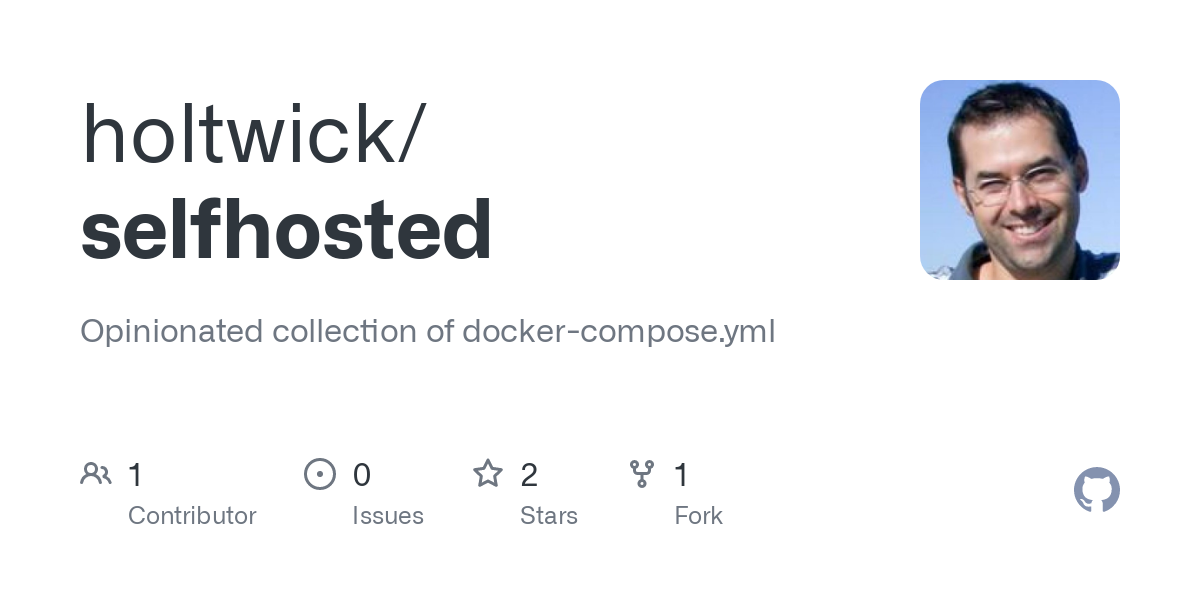Nice list. Another, similar repo, also quite opinionated: https://github.com/DoTheEvo/selfhosted-apps-docker. I’m not the author, I’ve just found it really helpful at times.
Any recommended “quick start” guides for LetsEncrypt? I get hung up trying to actually understand the process but I should just nut up and get it done.
Setting up a reverse proxy with nginx proxy manager is pretty simple and comes with letsencrypt support.
For letsencrypt to work, a software needs to write a confirmation code to a special path in your domain. When letsencrypt verifies that you can write to this path (and therefore control the domain), you get the certificate.
I hosted NPM in two servers for some time, I had it break too often and could not set custom configs easily. I switched to caddy and could not be happier.
When using caddy, you don’t even need to think about letsencrypt, unless you want to disable it in favor of something else.
you don’t even need to think about letsencrypt
Do you know if it’s just as friction-less to have a self signed cert up with Caddy for internal use? I was using Nginx PM recently and had the need to serve https but I can’t use letsencrypt because it’s not public-facing. Nginx PM only has letsencrypt as an option.
I wish there was a checkbox that just deployed a self-signed cert without bothering with the details (it’s 2024 ffs, HTTPS should be 1 click away, whether that’s self-signed or not).
NPM also lets you use your own certificates. Pick the “Custom” option after you click “Add SSL certificate”.
If your services are not public-facing and you can’t use the HTTP challenge you have the alternative to use a real domain name and to ask the bot to verify access to your DNS service through an API token. In NPM it’s called “DNS challenge” in the certificate options.
So instead of using something like “service.local” as the domain you would use “service.local.realdomain.tld”, give the Let’s Encrypt bot a token to the DNS service that you use to manage realdomain.tld, and ask for a wildcard cert for *.local.realdomain.tld.
Of course you will also need *.local.realdomain.tld to resolve to your server’s private LAN IP. Typically people prefer do this in their LAN DNS but if it doesn’t support that you can do it in the public DNS.
I’m using a self signed CA for my home network with caddy. You just set it up to use a ca once and afterwards it just works. So yeah, really easy.
Iirc you can upload your own certificates and keys in npm, you’ll just have to manage the CA manually or with some other tool.
true, and caddy works very well with docker compose setups.
Caddy combined with dns challenges are the dream!
Is this only for public facing services then? I have little desire to expose my services except through tailscale or something like that.
No! If you have a domain and can do DNS* verification you can get fully functional certificates to use on your internal network.
*Doesn’t have to be DNS, but then you’d need to expose http to the internet for verification.
Reading a post on the LE forum it sounds like smallstep might be closer to what I need.
The alternative is to offer the Let’s Encrypt bot access to your DNS service, typically in the form of an API token which you revoke after the bot verifies the domain. Access to the API is not needed for subsequent cert refreshes, only the first time.
The bot (or the proxy you use) needs to support the API of the DNS you use, naturally, but they support a wide variety of the most well-known ones.
Just to add to the other comments, you probably want to use a wildcard cert so you don’t need to individually certify each subdomain (or expose them at all).
I would suggest you check out Caddy. It handles let’s encrypt for you . If you are looking for a reverse proxy that is.
Acronyms, initialisms, abbreviations, contractions, and other phrases which expand to something larger, that I’ve seen in this thread:
Fewer Letters More Letters CA (SSL) Certificate Authority DNS Domain Name Service/System HTTP Hypertext Transfer Protocol, the Web HTTPS HTTP over SSL IP Internet Protocol SSL Secure Sockets Layer, for transparent encryption nginx Popular HTTP server
7 acronyms in this thread; the most compressed thread commented on today has 30 acronyms.
[Thread #518 for this sub, first seen 16th Feb 2024, 17:45] [FAQ] [Full list] [Contact] [Source code]
I‘m the author of this one and currently it is kind of a mess. Focus was on downloading stuff via usenet and torrent and now many home automation tools came along:





